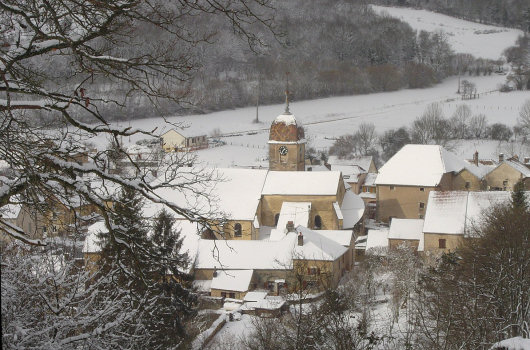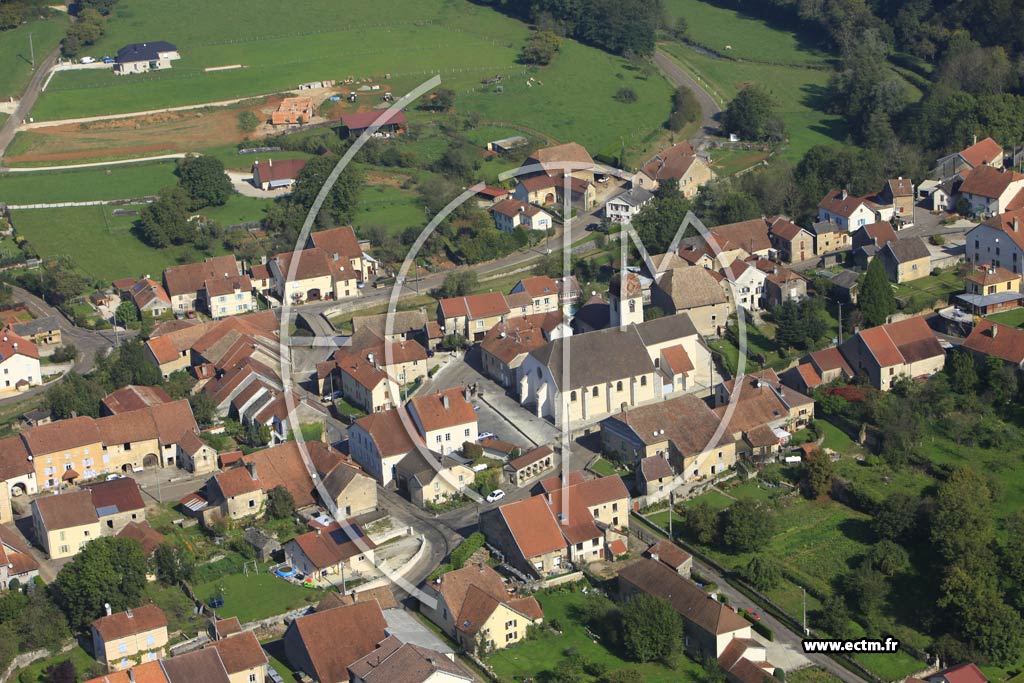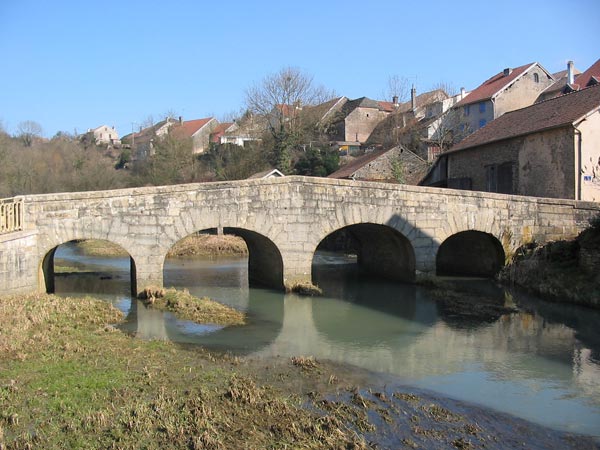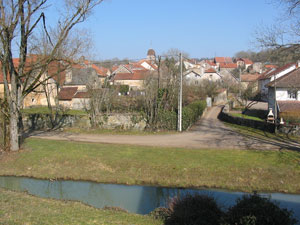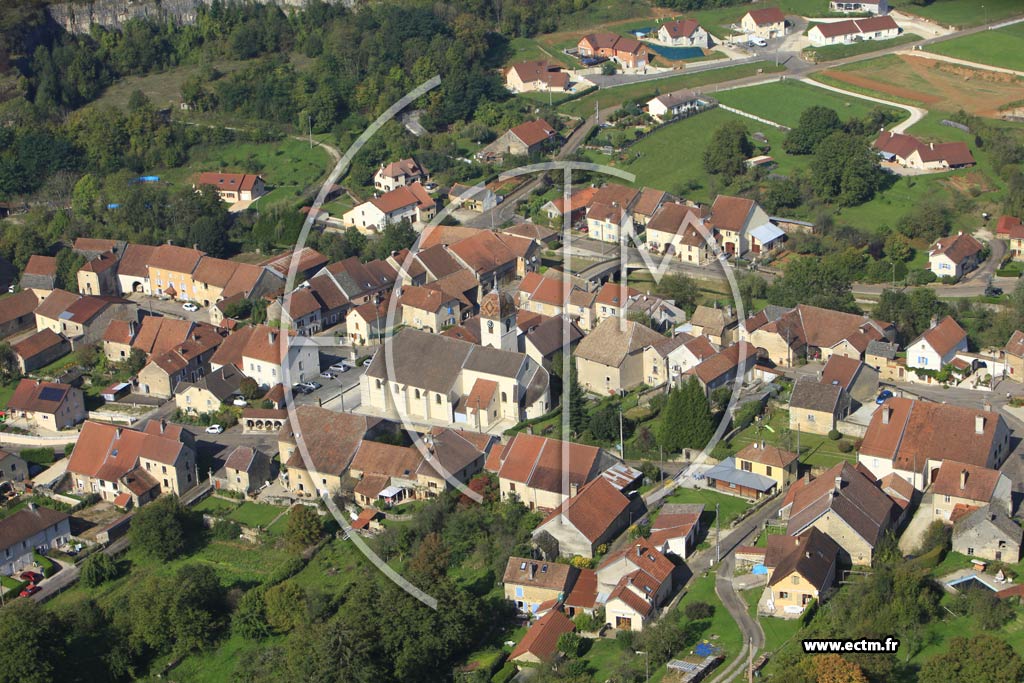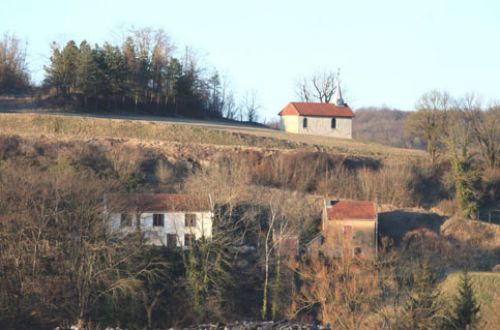Calmoutier
Calmoutier is a commune in Haute -Saône in the Franche -Comté.
Geography
Calmoutier situated at an altitude of 278 m above sea level, 10 km east-northeast of the town of Vesoul (air line). The village is located in the central part of the department, in the valley of Colombine, which is sunk into the surrounding plateau.
The area of 14.04 km ² municipal area comprises a section in the rolling countryside between the basin of Vesoul in the west and the level of Lure in the east. From northeast to southwest, the area is crossed by the Alluvialniederung Colombine, which provides for the drainage to Durgeon. The river is characterized several Talmäander. The Talniederung is on average 270 m and has a maximum width of 500 meters. Agricultural land use predominates here.
Flanked the valley on both sides of relatively steep, about 60 m high slopes, which lead to the adjacent, partly forested, partly planted with meadow land heights. On the northwest side of the valley are the heights of the Bois du Mont Aubry and the Bois de Saulx. South of the town stretches from the Grove of the Bois de Calmoutier, in the 390 meters, the highest elevation of Calmoutier is achieved. To the east, the municipality's area covers a corrugated plateau that is broken down by various hollows and dry valleys. It is constructed of a tough layer of chalk of the middle Jurassic period. There are karst phenomena, in particular caves and bays, including the Combe l' Epine. On the eastern part of the municipality extends to the bottom headwaters of the Ruisseau de Lauzin.
Neighboring communities of Calmoutier are Saulx and Colombotte in the north, and Velleminfroy Liévans in the east, Noroy -le- Bourg and Dampvalley -lès -Colombe in the south and Montcey in the West.
History
Remains of a Roman traffic route point to an early settlement of the area. The origin of Calmoutier was the foundation of a monastery at the beginning of the 9th century, the monks made the area under cultivation. In the Middle Ages the village belonged to the Free County of Burgundy and in the territory of the Bailliage d' amont. During the Thirty Years' War in 1636 Calmoutier plundered and burnt, and the monks fled to Vesoul. Together with the Franche -Comté reached the place with the Peace of Nijmegen in 1678 definitively to France. Today Calmoutier is a member of the 12 localities comprehensive community association Communauté de communes des Grands Bois.
Attractions
The church was originally built in Romanesque style, but later changed several times and partially rebuilt. Façade and presbytery show gothic style forms, while the ship from the 17th century came from. For valuable Interior features include statuettes of the Apostles ( 15th century ), paneling and statues from the 17th century, furniture from the 18-19. Century and a richly carved pulpit. The neo-Gothic Chapelle de la Côte (1854 built ) is reminiscent of a cholera epidemic, the time around 1850. The village is characterized by numerous houses from the 16th to the 18th century, showing the traditional style of the Haute -Saône. Additional area attractions include the remains of the monastery, a stone bridge over the Colombine and the 19th-century Lavoir with its five arches arch. It once served as a laundry and watering cattle.
Population
With 242 inhabitants ( 1 January 2011) Calmoutier one of the small towns in the Haute- Saône. After the population had decreased significantly in the first half of the 20th century (1881 587 persons were still counted ), a slight population growth was recorded since the mid-1970s again.
Economy and infrastructure
Calmoutier was until well into the 20th century a predominantly by agriculture (crops, orchards and livestock ) and forestry embossed village. The water power of the Colombine was formerly used for the operation of mills. Today, there are some establishments of local small businesses, including a quarry company. In recent decades the village has been transformed into a residential community. Many workers are therefore commuters who do their work in the larger towns in the area and in the agglomeration Vesoul.
The village has good transport links. It lies on the main road N19, which runs from Vesoul to Belfort. Through a local bypass the village core is relieved of through traffic. Further road links exist with Saulx and Noroy -le- Bourg.
Autrey- lès- Cerre | Borey | Calmoutier | Cerre -lès- Noroy | Colombe- lès- Vesoul | Colombotte | Dampvalley -lès -Colombe | La Demie | Esprels | Liévans | Montjustin -et- Velotte | Neurey -lès -la- Demie | Noroy -le- Bourg | Vallerois -le- Bois | Vallerois - Lorioz | Villers- le -Sec
- Commune in the department of Haute- Saône
- Place in Franche -Comté

